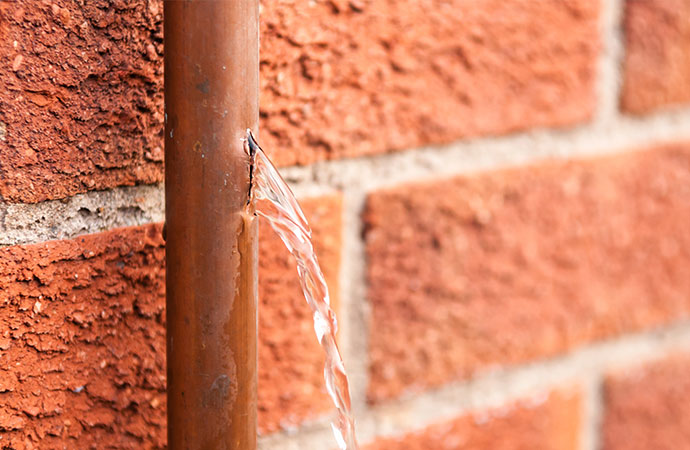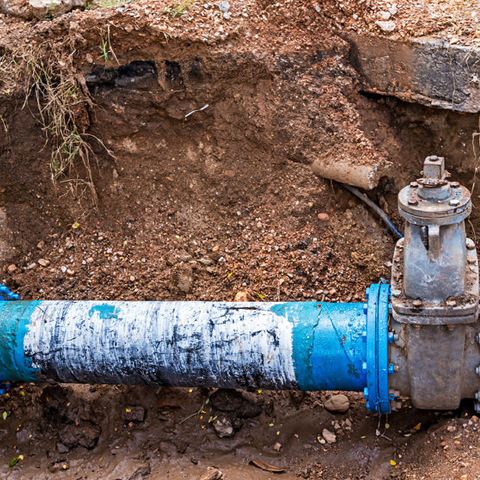Were you searching for advise about What You Should And Shouldn’t Do When Dealing With Water Damage?

What should you do if a water pipeline ruptureds in your residence, developing a mini-waterfall and also swamping a location of your residence? The longer you wait, the extra extreme the water damages in your property. For these factors, you require to discover what to in instance of a ruptured water pipe.
Shut Off the Main Waterline Valve
The first thing you have to do is shut the shut-off valve. Search for the regional shut-off valve to turn-off water in one specific location just. If you don't know where the localized shut-off shutoff to the component is, you have to turn-off the main waterline shutoff. This will certainly remove the water in your whole house. Usually, the major shutoff is found outside the home alongside the water meter. If it's not there, you can likewise find it in the basement at an eye-level or maybe in the 1st flooring on the ground. Normally, contractors but the shut-off shutoff in the main ground level shower room or right alongside it.
Call Water Damages Repair Pros for Help
After closing the water resource, call the pros for help. This is not something you can conveniently do it yourself because they require to repair the pipes and also attend to the damages to your residential property. Look for aid from a respectable company providing 24/7 emergency solutions. With their expert assistance, you can minimize worsening because water can permeate through your points resulting in distorted walls, loose floor tiles, or damage structure. Do not take this problem gently and also seek career guidance for complete comfort.
Paper the Damages For Insurance
As you are awaiting the pros to arrive, document the damages brought on by the errant pipeline. Take images and videos of every little thing. Do closeup shots of prized possessions. These things will act as evidence for your property owner's insurance policy. Staying positive with this enables you to sue for insurance coverage, which will certainly help you and your household return on your feet.
Restore Points That Can Be Conserved
As soon as you're done taking images, read the things and also get one of the most crucial ones from the pile. Dry them off as well as try to protect as much as you can. Drag them away from moisture so they can begin to dry out.
Start the Drying Process
While waiting for the pros, you can start the drying out procedure. Luckily, water from your waterlines are tidy so you do not have to stress over drain water. The flowing water may have interrupted the dirt as well as debris in your carpets and also floorboards. Be prepared with gloves as you make use of pails to discard out the water. Then, blot out as high as you can with old towels. You can likewise turn on an electrical follower or open home windows to advertise air flow. This will accelerate drying out and deter mold and mildew as well as mildew development.
Experts are the only ones qualified to take care of the burs pipes and succeeding damage. You will generally see red flags like bubbling paint, unusual noises in the plumbing, musty smell, caving ceiling, peeling wallpaper, or water discolorations.
What should you do if a water pipe bursts in your house, producing a mini-waterfall and swamping an area of your house? For these factors, you require to discover what to in situation of a burst water pipeline. After shutting the water resource, call the pros for help. With their professional help, you can alleviate exacerbation since water can seep with your things resulting in distorted walls, loosened floor tiles, or damages structure. Fortunately, water from your waterlines are clean so you don't have to worry concerning sewage system water.
How to Handle a Burst Pipe and Minimize Damage
Steps to Take Ahead of Time
If you own property in an area that experiences cold weather, you need to be aware of seasonal maintenance tasks that will help you protect your property as the weather changes each year. One of the most important steps is to winterize your pipes to ensure they won't freeze or burst when the temperature drops. This includes action items like insulating any exposed pipes, detaching garden hoses and covering outdoor faucets. If the weather gets cold enough, you may even consider leaving a faucet dripping or opening cabinet doors during the coldest parts of the day.
No matter how prepared you might be, accidents and emergencies still happen. You'd be wise to set up a savings account specifically for your property so you have a "rainy day" fund set aside for unexpected expenses. All homes—regardless of age, location or condition—will inevitably need some form of emergency repair.
Steps to Take for Frozen Pipes
A frozen pipe will not necessarily burst, so if you can catch a frozen pipe early on, you could save yourself a major headache. When your area experiences frigid temperatures, be sure to check your plumbing and keep an eye out for warning signs like faucets only releasing small amounts of water or toilets not refilling when flushed. If you do run into one of these issues, you're likely dealing with a frozen pipe.
If this happens, your first step should be to cut off the water supply to that section of the plumbing. Expanding and freezing water can quickly cause damage. Even if the water supply is shut off, you will likely still deal with some leaking from the water that defrosts after the pipe has thawed. Be prepared with a mop, bucket and/or towels to quickly soak up any excess water.
In order to thaw a frozen pipe, you can use a space heater, infrared or incandescent heat lamp, or even a hairdryer to warm up the frozen area. Heat tape is also an option and should be used according to manufacturer instructions. Do not use any sort of open flame to thaw frozen pipes, as it poses a major fire hazard and can damage your pipes further.
Steps to Take for a Burst Pipe
Water damage claims are the second most common insurance claim in the U.S. When you're dealing with a frozen pipe, the water continues to expand as it freezes, which creates pressure that can cause a pipe to burst. When this happens, the crack or leak in the pipe allows water flow from the pipe to enter your home where it shouldn't. If a pipe does burst, you need to act quickly to mitigate property damage and repair cost.
Your very first step should be to shut off your main water supply to minimize flooding—typically the most expensive damage to address. Once you've shut off the water supply, make sure you identify the entire area that has been impacted by the leak. Remove as much water as possible—as quickly as possible—using a mop, sponges, towels or a shop vacuum or wet/dry vacuum. To prevent long-term damage due to moisture build-up, run a dehumidifier or fan in the affected area. Contact a licensed plumber to ensure the pipe is correctly repaired before running any water to that section of the home again. Burst pipes and the associated water damage are something you absolutely want to avoid as a property owner. If you've had to learn your lesson the hard way, don't let yourself get caught in a similar situation during the next spell of cold weather. The best way to deal with frozen or burst pipes is to prevent them in the first place—proactive winter maintenance will save you time, money and a whole lot of stress.

I ran across that review on What You Should And Shouldn’t Do When Dealing With Water Damage when looking around the web. Sharing is good. Helping others is fun. I praise you for your time. Visit us again soon.